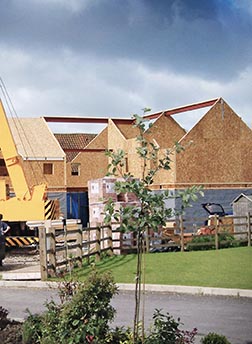
NATURAL timber is gorgeous; and has been the building material for eons! It still has a huge place in our heart even amongst the multitude of new technological advances in the construction industry.
Timber is a natural product and, like all products of nature including us, it is neither consistent nor guaranteed free of defects. Prone to warping, twisting and splitting, sawn timber is still widely used — understandably so, as it is relatively cheap, easy to work and both light and strong. Yet today’s building industry expects high levels of precision and for structures to be right first time. Natural timber cannot deliver 100% reliably on this and so came the engineered wood products boom — materials which, instead of being hewn out of solid wood, are manufactured by bonding small pieces of wood fibre together to produce a homogenous product.
And West Fraser claims to lead the way in the manufacture of innovative timber panel products and claims to have done so for decades.
Today’s wood panel products are among the best-known examples of engineered wood.
- Medium Density Fibreboard (MDF) is made by mixing sawdust with a strong resin and curing it under pressure to create a solid board with a smooth and consistent texture all the way through.
- Production of particleboard achieves a similar effect by using larger wood particles. Both these products are free of defects and are easy to work with.
- Oriented Strand Board (OSB), however, provides the best example of how timber’s natural strength can be exploited and even enhanced through an engineered process. Thin flakes of softwood fibre, coated with a resin binder, are laid down in layers to create a deep bed of loose fibres.
The assembly process carefully orientates each layer so that the fibres overlap in different directions. The fibre mat is then compressed under great pressure and heat is applied to cure the resin.
The resulting board is stiff and strong, with the fibres oriented in such a way as to maximise bending resistance.
See page 36 of our August/September 2024 issue on our Back Issues page.

